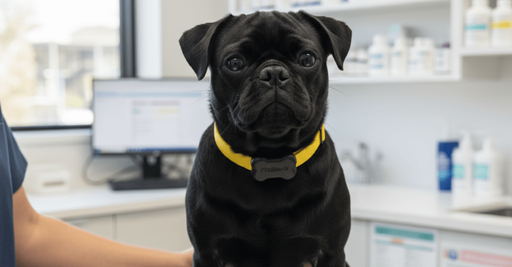The FitBark team recently got a chance to chat with Dr. Rebecca Johnson. Dr. Johnson is a founder and director of the Research Center for Human-Animal Interaction based at the MU College of Veterinary Medicine. Many of her research studies have provided insight into the physical and psychological benefits humans gain from having an animal companion.
We have always known dog was “man’s best friend” and now we can start to understand why.
Read Rebecca’s full bio here.
Q: How would you describe your work?
A: My work is a mission rather than work. The mission is to enhance interaction between people and companion animals for the benefit of both ends of the leash. This includes both physical health and emotional well-being.
Q: What are some of the biggest benefits in studying the relationship with animals, dogs in particular, and humans?
A: It never ceases to amaze me that the human-animal bond forms very quickly and become very deep. And beyond even the one-to-one benefits of this bond are the social benefits. Dogs are truly a social lubricant (this is born out in research by the way), and often people create social networks around walking their dogs and training them.
Q: What sort of trends have you seen so far?
A: Older adults who walked shelter dogs in one of our studies had a significant improvement in their normal walking speed more so than those who walked with a person or did not walk.
Public housing residents lost an average of 14 pounds by walking with dogs that we provided them.
Veterans training shelter dogs formed a bond with other veterans in the training class and serve as a support network for each other.
PTSD service dogs we have trained in our program for veterans have greatly enhanced the independence, feelings of security, and well-being of their veterans.
Q: Many studies come to the conclusion that dogs release oxytocin in humans, making us feel happier and more trusting. What do you think is the biggest factor attributed to this - puppy dog eyes, wagging tails, or something much more scientific?
A: The interesting thing about human-dog interaction is that four of the five senses are stimulated—sight, sound, hearing, and touch. There aren’t many situations in which all of these senses are stimulated at once. That makes the interaction very powerful and the response in the brain pretty immediate. But we can’t overlook the idea of neotony—that is that dogs with big eyes have a resemblance to babies. And certainly when a dog acts receptive—joyous—it is contagious!
Q: Do you have a dog? Tell us about them!
A: Yes—MacKenzie, my 9-yr old Gordon Setter girl. “Kenzie” is a sweetheart. She let me know fairly early on that she did not want to be a therapy dog so there would not be regular nursing home visits in our future together. But that’s ok. She is a joyful soul who loves her tennis ball and treads water like a champ when there is a frog swimming near her. She’s my little, 71-pound shadow!
Q: Do you ever notice findings in your study overlapping with the connection you have with your dog?
A: I have been a daily dog-walker for over 30 years but during the dog walking studies, on my own walks with Kenzie I have become even more aware of how fun it is to see the world as she is experiencing it, and to be tuned in to her interactions with nature. For example, it is especially meaningful to me to watch the way she becomes statuesque when she sees a squirrel (that I probably haven’t noticed), her curiosity at watching a little salamander run across the sidewalk, the way she raises her muzzle and sniffs the breeze.
I also notice that research I read impacts my interaction with Kenzie. For example, I just read a study that human touch of the dog made a much more profound neurochemical response than human voice. So while I still talk to her a great deal, I have added even more touch. It also makes me feel good!
Q: Why is it so important to track your dog’s health and your own simultaneously?
A: Because we can help each other to be healthier. Our dogs depend on us to keep them healthy, be in tune to notice when they are not, and to intervene. But our health is related to theirs. The notion of One Health is a simple one—that there is no dividing line between human and animal health.
If we aren’t getting enough exercise or rest, our dog may not be either. With the fast-paced lives that we live now, we need to be connected with our dogs to take us away for a while from the obsessive work and other demands. Tracking can help us not only escape to a different place—the inner world of our dog—but it can also help us feel more in touch with our dog.
Q: What else do you think we can learn from tracking our dog’s health, rest, and activity?
A: We can be more aware of how we are meeting their needs. If our dog is overweight, for example and we see it’s activity level trackings, we can then monitor this and see how much activity makes a difference in the dog’s weight loss. Most dog owners want to be in tune with their dog. Tracking these parameters helps us to be closer in tune with our dog. That can only improve the human-animal bond! And that is healthy for both ends of the leash.

















